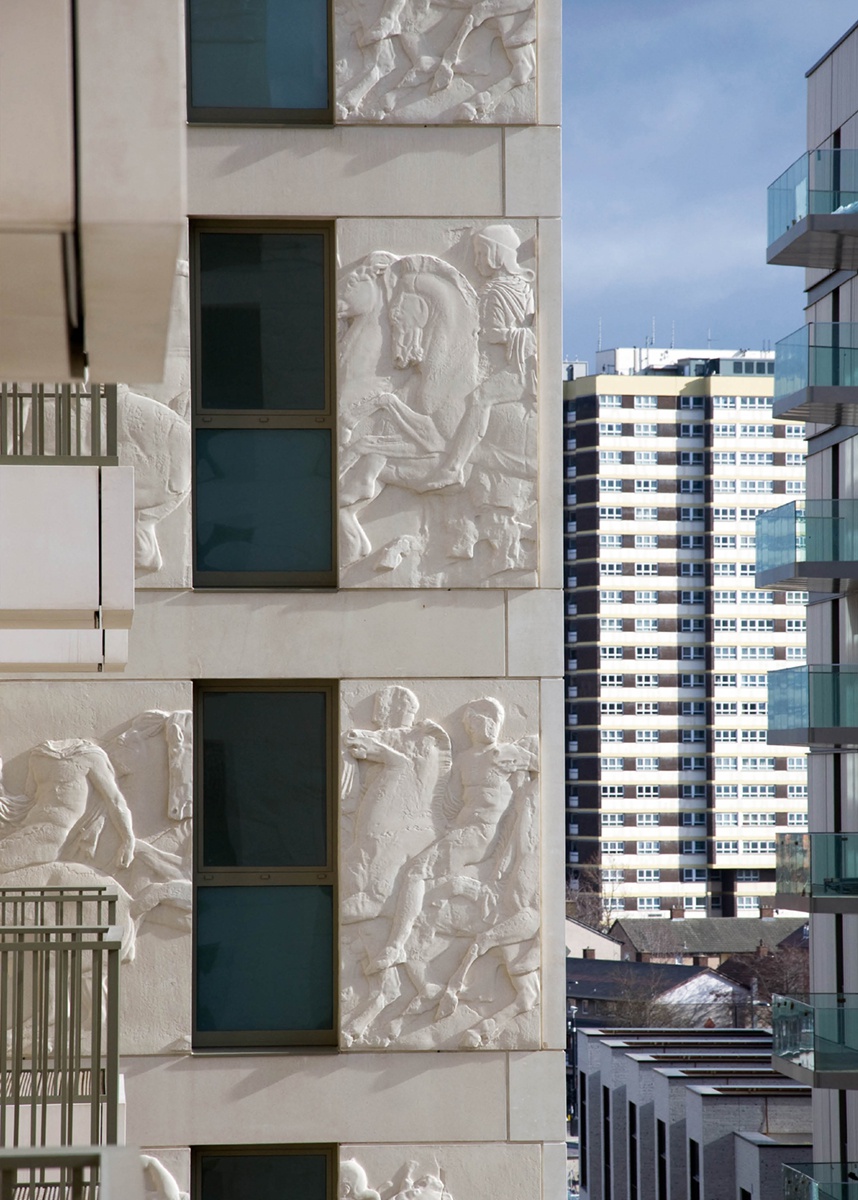Athletes’ Housing, London Olympics - Architecture Ireland
Issue 264
June 2012
Text Níall McLaughlin Architects
Images Crispin Hughes, Níall McLaughlin Architects
Block N15 in the Olympic Village was home to visiting athletes during the Olympic games. It will be adapted for General Needs Social Rented accommodation after the event. The building contains a mixture of townhouse, duplex and one and two-bed residential units. Glenn Howells Architects designed the internal organisation, structure and services of the building and Níall McLaughlin Architects designed the façade. This strategy is typical of the design principle used throughout the Athletes Village. The lower three floors of the housing block are given over to the family size ‘townhouse’ types. These have direct access to protected communal gardens at first floor level at the rear. They are built on a podium containing car parking. The upper floors are a mixture of unit types served by two circulation cores, each with its own dedicated entrance on the north façade. Each unit has its own external balcony. This proposal accepted the separation of the façade as a precondition of the project. Instead of striving for a synthesis between internal organisation and a truthful external representation, we looked into the history of the façade as a screen mediating between the intrinsic qualities of the building and a representation of the values of wider society which brought the building into being. It allowed us to embody the abstract systems that were used in its becoming. We sought to find a form of representation that revelled in the possibilities of technology and scientific management of building processes, while reflecting on the loss of nearness implied in the separation of human labour, materials and place. We wanted the façade to deal with depth, texture, communicative capacity and relevance of our public realm.
We chose the Parthenon Stones as emblems of profound cultural and contextual change. They were conceived to be seen in a particular light from a particular angle under the eaves, embedded in a supportive context. Now they are dispersed throughout the world, continually idealised and re-idealised with each generation. It is this deracinated quality that makes them suitable representations. We digitally scanned the stones in the British Museum, the resulting 3D model was exported to a computer controlled routing device which created storey-height panels from the reliefs. The panels were cut from soft board so we transferred it to a more durable medium by making latex casts and converting them to precast concrete. These were used to create the modular façade system.
